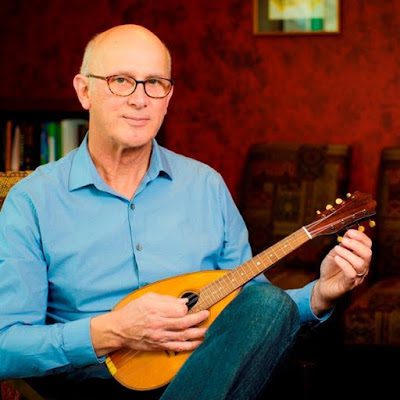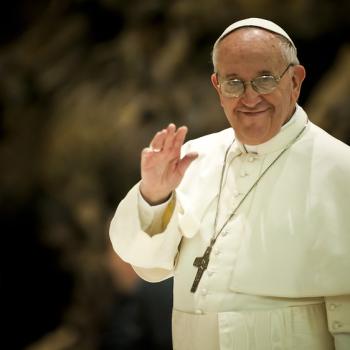
Karl Keating has been playing out of tune way too much lately.
*****
This is an old, tired discussion, but Catholic apologist and author Karl Keating wanted to again make an issue of it during the course of his (literally) 99 or so mentions / criticisms of me in his latest book, The Francis Feud. I’ve documented six glaring errors that he makes in the book, but is a side-issue and has nothing directly to do with the pathetic attacks upon the Holy Father.
Terminology is important. We must have accurately descriptive labels of the groups and sub-groups in religion generally, and for the sub-groups within the Catholic Church. Briefly, on what is usually called the “right” side of the ecclesiological spectrum, there are legitimate self-described “traditionalists” and there is also a group of people that are very far right, extreme, and radical.
The current issue has to do with what to call those extremists or fanatics. If we are to analyze the issue, they need to be able to be called something, just as with discussions of any other adherents of a particular ideology. One can’t define terms every time a group is brought up. That’s the purpose of previously understood labels or titles.
There is a big back story to this controversy with Karl over terms, because the organization he founded, Catholic Answers, was the immediate impetus for my coining my term, radical Catholic reactionary, in August 2013 (making very clear what my definition was and why I reasoned as I did).
On the May 31, 2013 edition of Catholic Answers Live, host Patrick Coffin and guest Tim Staples dealt with the general issue. The terms they used raised a firestorm of protest. It was quite a dust-up (I remember the incident well). Patrick later wrote about it in an article entitled, “Meet the Mad-Trads” (7-12-13).
It appears to have been removed from the Catholic Answers website. I had to search for it on Internet Archive. The two shows from May 31st (one / two) and two more (one / two) on August 12th, 2013 (all called “Radical Traditionalism”) are still available on the site to be listened to.
The title of that (now-removed) article quickly indicates the problem. Legitimate traditionalists complained very loudly and passionately about feeling that they were being included in these sorts of labels. They very often didn’t take it as meaning “the extreme, fringe faction of the traditionalist movement” but rather, as “traditionalists, who are always or usually ‘mad’ or ‘radical’ or ‘extreme.'”
I think thee impressions / opinions were wrong. Tim, Patrick, and CA did not mean it in the way they took it (as they made clear in their subsequent explanations). But the problem remained. If a large group of folks are offended — even if they totally misunderstand a description — it’s time, in charity, to change the term.
Thus, in Patrick’s article, he used not only “mad-trad” but also “radical Traditionalism” and “Rad-Trads.” This was not the only time CA used such terms. Jimmy Akin, in an article dated 1 July 2000 utilized “rad trads” and “radical traditionalists.” Karl Keating (then still President of CA) got in on the discussion / controversy about these radio shows in an article dated 9-1-13 (“Hyperbolic Traditionalists”). Karl stated:
The fact is that there are radical Traditionalists, people who can be distinguished from run-of-the-mill Traditionalists by their beliefs, actions, and attitudes. The two Catholic Answers Live programs discussed such folks . . .
[Taylor] Marshall did identify things that commonly are found among radical Traditionalists: “the denial of the Jewish holocaust,” “the outright denial of Vatican II as a valid council,” “disdain for Pope John Paul II and Pope Francis,” and “the belief that Latin Mass Catholics are ‘A Team’ and Novus Ordo Catholics are ‘B Team.’”
Those attributes don’t amount to a definition of radical Traditionalism, but they are useful indicators.
Karl proved in this article that he himself understood that there are serious and essential differences among groups on the “religious right,” by referring to “the distinction drawn between fringe groups of ‘radical Traditionalists’ and the much larger body of regular Traditionalists.”
It was precisely because of this controversy (as the immediate motivation) that I coined my term. In so doing I wanted to accomplish three things:
1) Indicate extremity and “far-right” / fringe (“radical” / “reactionary”).
2) Show that I regarded such people as Catholics, and not schismatics.
3) Completely remove any reference to or connotation of “traditionalist” or “trad” in the coined term.
Hence, radical Catholic reactionary. It accomplished all three things simultaneously (and Karl and I talked about it at some length after I coined it. I remember that he thought it was a bit awkward, but I don’t recall any fundamental disagreement with coining a term along these lines). I myself had used “radtrad” for a few years, but not that much. My preferred term before 2013 was quasi-schismatic.
Again, I was trying to be nuanced (the opposite of simplistic), in recognizing that they were not formally, canonically schismatic; yet tended to have that sort of spirit, and might possibly end up that way.
I maintain, then, that my coined term is perfectly sensible, rational, and useful. I came up with it in reaction to the controversy caused by the Catholic Answers Live shows, in response to concerns expressed by my mainstream traditionalist friends. But now, when we fast-forward to June 2018, all of a sudden Karl is irrationally, unfairly chiding me in his book for using my term:
The second note I wish to make regards Armstrong’s nomenclature. . . . his favorite seems to be one of his own fashioning, “radical Catholic reactionary,” . . .
I repeatedly have urged Armstrong to eschew labels such as “radical Catholic reactionary,” arguing that they do little to clarify and that, like widely throw [sic] nets, they drag in the guilty as well as the innocent.
That may be well and good, but the problem is that Karl loves to criticize, while offering no substantive, practical, problem-solving alternative. What is his solution to legitimate traditionalists being offended by “radtrad” and suchlike: terms in common use at his own Catholic Answers apostolate: not nearly as much on my pages?
How does he propose to resolve this dispute? I don’t see him offering any solution. At least I gave it the old college try. It’s easy to sit on the sidelines and gripe about folks who are trying to make things better and more understandable, while offering nothing better.
How does he label people I call radical Catholic reactionaries in his book? He calls all and sundry (in fact, people with widely varying ideas) “Traditionalist” (big T) with some distinctions offered in context. He cites Phil Lawler, using the term “radical Traditionalist.” Quite ironically, he seems to have no problem with Phil Lawler calling Pope Francis a “radical” in his book, Lost Shepherd.
That’s fine and dandy, but if I dare use radical Catholic reactionary, then I’m the one who is extreme and unhinged and insulting. The pope’s fair game, but the fringe, extremist elements in the Church on the far right must be treated with kid gloves or associated with perfectly legitimate traditionalists by calling them the exact same name. Phil Lawler writes in his book:
I did my best to provide reassurance—for my readers and sometimes for myself—that despite his sometimes alarming remarks, Francis was not a radical, was not leading the Church away from the ancient sources of the Faith. But gradually, reluctantly, painfully, I came to the conclusion that he was.
The Roman pontiff should be a focus of unity in the Church. Francis, regrettably, has become a source of division. There are two reasons for this unhappy development: the pope’s autocratic style of governance and the radical nature of the program that he is relentlessly advancing. (p. x)
I myself wrote that analysts on both ends of the political and theological spectrums were, for their own partisan purposes, trying to portray the pope as a radical. A year later, I was ready to conclude that maybe Francis really was a radical, . . . (p. 33)
Why would a pontiff bent on radical change within the Church make this extraordinary effort to reconcile with recalcitrant traditionalists? (p. 184)
We live in exceedingly odd times.
NOTE: See additional (rather tedious) discussion between myself and Karl Keating below in the combox, and also (a few additional tidbits) at my Facebook cross-posting.
***












